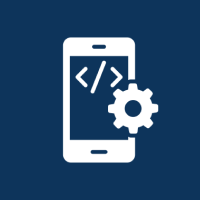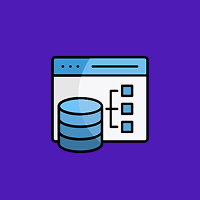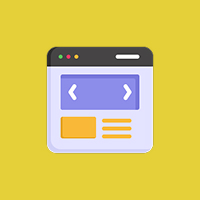Hybrid app development can afford businesses the advantages of both faster development and lower costs while still reaching users on multiple platforms. However, if UX is not considered adequately, developing a hybrid app that provides smooth, intuitive, and delightful experiences can be incredibly challenging. Good UX is what attracts people to use and continue using your app, no matter how it was developed.
Here are a few tips and suggestions for practical, actionable steps you can use to enhance UX for hybrid apps to have the same performance as native apps.
1. Develop Your App With A Native Style
The main drawback to hybrid app development is that occasionally the user interface feels un-native. The expectation is that apps will all look and behave somewhat familiar to their platform (e.g. iOS, Android). Make sure you follow each platforms design principles and human interface guidelines to meet the users expectations. Incorporate native-like UI components, platform-based icons, and familiar gestures. Although small details like swipe actions and the placement of navigation bars may not seem significant, these will drastically improve the sense of natural interactivity.
2. Rev up Performance
Performance may be one of the the most important elements of UX. Users uninstall apps for being slow or freezing often; therefore, your app needs to be lightweight. You will want to avoid complex heavy animations and not use massively large images that may take forever to load. While optimizing network requests and implementing efficient coding practices, make sure to use clean architecture and frameworks like Flutter or React Native that are built to handle rendering better. Always test performance on real devices and not only simulators to find any delays from animations to responses.
3. Prioritize Responsive Design
Your hybrid app is likely going to be available on a range of screen sizes — from small phones to large tablet devices. It is super important that the app is responsive by using flexible grids, scalable images, and adjusted layouts to ensure the app is always sharp. Responsive design not only looks more professional, but it can help users accomplish tasks with ease, regardless of the type of device they are using.
4. Reduce Load Time
No one likes to wait and speed is one of the biggest areas for good UX. Compressing large images (ie: jpeg files), using minified code, and lazy loading are great strategies that can help with content-heavy sections in your app. Use caching for data that is not constantly changing, that way users do not have to wait for data to reload the every time to reopen the app. Fewer load times means increased engagement and less users abandoning use of your app.
5. Ensure Intuitive Navigation
Easy and clear navigation can make or break users’ experiences with your application. Make it even easier by using established patterns, like tab bars, drawers for side navigation, or bottom navigation, that provide easy access for users to navigate. Delete navigational fluff, organize your menus, and avoid making users figure out where to press next. Moreover, draw attention to prominent actions, such as checkout buttons, submit forms, or functions to contact support, so they are never overlooked.
6. Test on Different Devices
There’s nothing better than developing on a simulator, but once you think you have the app ready for release only testing to find UX issues in the real-world. A user experiences odd screen rendering, delayed touch response, or odd performance unbeknownst to you. You should try out your app on as many devices with various operating systems to catch usability issues before release, instead of fixing them post-release, which costs more development hours and affects your app’s rating.
7. Give Your App Offline Capabilities
An automatic standout feature of many hybrid apps is its offline capabilities. Users appreciate interacting with your app without an internet connection. You can enable the offline features by giving storage capabilities to important data; local caching to content previously loaded. Including features like the ability to fill forms offline, and/or the ability to save drafts, adds even extra value for the user, and a connection to the app without an active internet connection.
8. Collect & Act on User Feedback
Your users will have the best insight on how to improve UX. Make sure you have ways for your users to provide feedback, report bugs, or rate features. In-app surveys, star ratings, and simple feedback forms are all effective ways to collect feedback. Regularly check and analyze reviews in app stores to uncover issues your users may be experiencing. Be responsive! Fixing UX issues in a timely manner lets your users know you want to enhance their experience and builds trust.
9. Ensure Accessibility
A brilliant UX should be accessible to all users, including those with physical and cognitive disabilities. Be sure your hybrid app has features like screen reader support, high-contrast themes, and larger touch targets. Consider using clear, readable font types and providing text alternatives for images when contextual. Utilizing accessibility best practices will not only enhance the experience for all users, but also increase your app’s reach.
10. Continue to Update & Iterate
User expectations are always changing, and you will want to update your hybrid app on a regular basis. Update regularly to improve performance, mitigate bugs, and add new features that have been requested through feedback. Use analytics to track anywhere users fall off and where they seem to struggle, then allow those touch points to inform how you will update and iterate to enhance your app and its user engagement over time.
Conclusions
Creating a fantastic user experience should always be central to your hybrid app creation process. Although hybrid frameworks create efficiencies in time and money, they still require careful planning, experimentations, iterations, and attention to detail, and will never reach the performance and attention to details of native apps. If you keep simple but critical tenets of native-like design, performance, response time, offline capabilities, and user feedback about the performance of your app, you can develop hybrid apps that run quickly, are polished, and that users want to use.
Putting user needs first is the key separating point between successful apps and the rest. Spend the time now, and invest in your UX, and your hybrid app will become a star in a crowded marketplace ‒ boosting engagement, loyalty, and opportunities for you and your business to grow.
Contact Us Today













 Database Development
Database Development












































